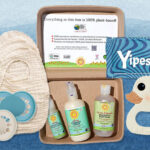Nursing 911

Welcome to the world of nursing! If this is your […]
Welcome to the world of nursing! If this is your first baby, you probably feel like you’re in uncharted territory and for good reason. Breastfeeding may be “the most natural thing in the world” according to many a well-intentioned veteran mom, but that doesn’t mean there aren’t pitfalls along the way. Rest assured, these problems are just as natural as the process that brings them about.
Together with Diana West, IBCLC, media director of La Leche League International and co-author of The Womanly Art of Breastfeeding, we’ll walk you through each ailment and offer helpful remedies so that you can face difficulties head on and establish a satisfying breastfeeding routine for you and your baby.
Nursing nuisance No. 1: Engorgement
Facts behind the frustration: When your milk supply far exceeds your baby’s demands, your breasts can swell painfully, making even the slightest touch feel unbearable. Bra? Forget about it. (Shirt, you’re on notice too.) The most common time for engorgement to occur is soon after your milk first comes in, usually two to five days after your baby is born. Up until that point, you’ll produce colostrum, a yellowish, nutrient-dense liquid that contains important antibodies for your just-birthed babe. But once the real deal appears, it may take a few days before you or your baby are in the routine of draining your breasts on a consistent basis, and the volume of milk will be much greater than the volume of colostrum was, meaning your girls will become stretched to capacity. Some women report only a mild swollen feeling, while others experience extremely painful engorgement, including hard lumps in their breasts and flattened nipples.
West weighs in: One way to prevent engorgement from happening is to avoid intravenous fluids (IVs) during labor, as they can greatly increase engorgement after birth. Once the baby is born, engorgement is best treated by removing milk from the breasts. This also helps drain the other fluids that are adding to the engorgement. Here are a few ways to get the milk flowing:
- Breastfeed as much as possible, starting right after birth.
- If breastfeeding isn’t possible or isn’t going well, use gentle hand expression to remove milk.
- Tenderly lift, move and massage your breasts and lie flat on your back when not breastfeeding to help the lymph fluids drain.
- Use an over-the-counter anti-inflammatory medication to reduce the inflammation. (These are generally safe while breast-feeding.)
- Use cold—not heat—to reduce the swelling and inflammation. Try bags of frozen peas or cold packs placed on the breasts for 20 minutes at a time.
Nursing nuisance No. 2: Inverted nipples
Facts behind the frustration: If gently squeezing your areola causes your nipples to fold inward or retract into your breast, you have flattened or inverted nipples. This can sometimes cause difficulties with latching, since babies have an easier time finding their way with a nipple that protrudes.
West weighs in: Some types of inverted nipples can be pulled out with your fingers just before baby nurses. Other types need some type of suction to draw them out so baby can latch. Try pumping for a minute or use a product for inverted nipples (such as Supple Cups or LatchAssist). A nipple shield also may help. If your nipple won’t pull at all, breastfeeding may not be possible, although you should still be able to pump your milk.
Nursing nuisance No. 3: Painful lumps
Facts behind the frustration: Just as is the case in engorgement, milk is sometimes made faster than it is expressed, and if it gets backlogged in your ducts, they can swell and become inflamed. This creates a hard mass in your breast tissue that sometimes appears red and is warm to the touch. Can you say yeeeouch?
West weighs in: There are several ways to help clear a plug in your milk duct:
- Breastfeed or express your milk as often as possible.
- Apply heat to your breast with a warm washcloth or heating pad before nursing or pumping.
- Nurse your baby with his chin pointed in the direction of the plug.
- While nursing or pumping, gently massage the sore area first just in front of it (between it and your nipple) to clear the duct, then behind it to create pressure to push it through the duct.
- Try wearing a softer bra, avoiding underwires.
- Use lecithin supplements (one 1,200 milligram capsule three to four times a day) to break up the fat particles.
Nursing nuisance No. 4: Thrush
Facts behind the frustration: Thrush is a topical yeast infection that causes white patches in a baby’s mouth or on the surface of a mother’s nipple. It can also cause the mother’s nipple to appear pink or inflamed and shiny. But whether on babe or mom, it can throw a definite kink into your feeding schedule.
West weighs in: Babies can sometimes have yeast (fungal) infections of their mouths and also diaper areas. This is generally treated with an antifungal medication prescribed by your baby’s doctor. Topical infections on the nipple are possible but rare and are also easily treated by a topical antifungal medication.
Nursing nuisance No. 5: Cracking
Facts behind the frustration: If a mother has cracks in her nipples, there is a strong possibility her baby is compressing and/or abrading her nipple while breastfeeding. Sometimes this is a result of poor positioning or the way the baby is being latched, and sometimes it’s caused by the baby’s inability to move his tongue effectively as he feeds.
West weighs in: First, try a more reclined nursing position to help your baby tap into his natural latching reflexes. If it still hurts or your cracks continue, it will help to talk to a breastfeeding expert who can assess your situation and help determine the problem and what can be done about it. An international board certified lactation consultant (IBCLC) will be most qualified to help you.
Nursing nuisance No. 6: Low milk production
Facts behind the frustration: There are multiple ways to tell if your babe is ingesting enough at each feeding, including the following: gaining an ounce a day for the first three months of life and regaining birth weight by 10 to 14 days postbirth, nursing frequently (every two to three hours), sounds of swallowing, wetting at least seven diapers a day, and having at least three stools per day for the first month. (After month one, he’ll go down to once a day.) If you’re concerned about any of these factors, you may have a milk production problem.
West weighs in: First it’s important to determine if the problem is the baby not taking enough milk or your breasts not making enough milk. If your baby isn’t taking enough milk because he can’t breastfeed effectively, you’ll need the help of a breastfeeding specialist to evaluate the problem. An IBCLC will be most qualified to help you. Increasing your supply when the underlying problem is the baby’s inefficient milk removal is best addressed by increasing milk removal by pumping or hand expression and using breast compressions. You might also consider using herbs (such as goat’s rue, fennel, alfalfa, and fenugreek) and foods (especially high fiber grains) to increase your milk production. If your baby is removing milk efficiently, you may have an underlying hormonal or structural problem, and should be seen by a medical professional to determine the cause.
Nursing nuisance No. 7: Mastitis
Facts behind the frustration: Mastitis often appears as clogged ducts do, with the exception that the inflammation is being caused by infection instead of simply a milk backup. Bacteria can enter the breast through cracked nipples, causing flu-like symptoms such as fever and chills. Mastitis is one of the most frustrating of nursing maladies, since it may combine cracked nipples, swollen breast tissue and a general feeling of being unwell into one unpleasant package.
West weighs in: Mastitis resolves most quickly when milk is moving frequently and your body is strong enough to fight the inflammation and infection. Here is a helpful phrase to remember: “Empty breast, lots of rest.” Nurse or pump and take it easy as much as you can. Cold packs and over-the-counter anti-inflammatory medication will help reduce the inflammation. Also try the “bag of marbles” massage several times a day: Hold your breast with both hands and your fingers interlaced, and knead your breast like a bag of marbles to move the tissue around inside the breast. If the problem is not better within 24 hours, call your doctor for antibiotic treatment.
By Rachel Reiff Ellis
Image: iStock.com







